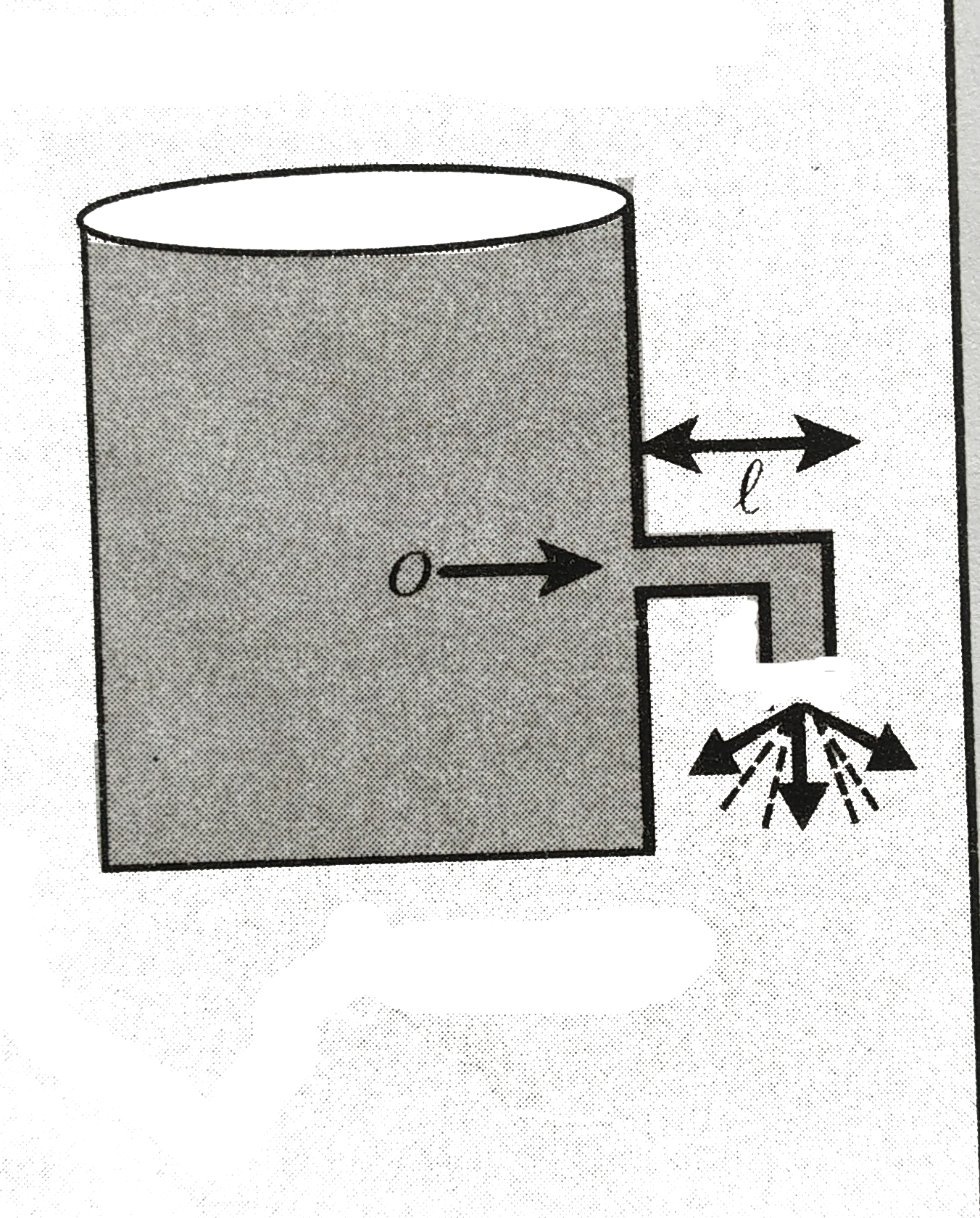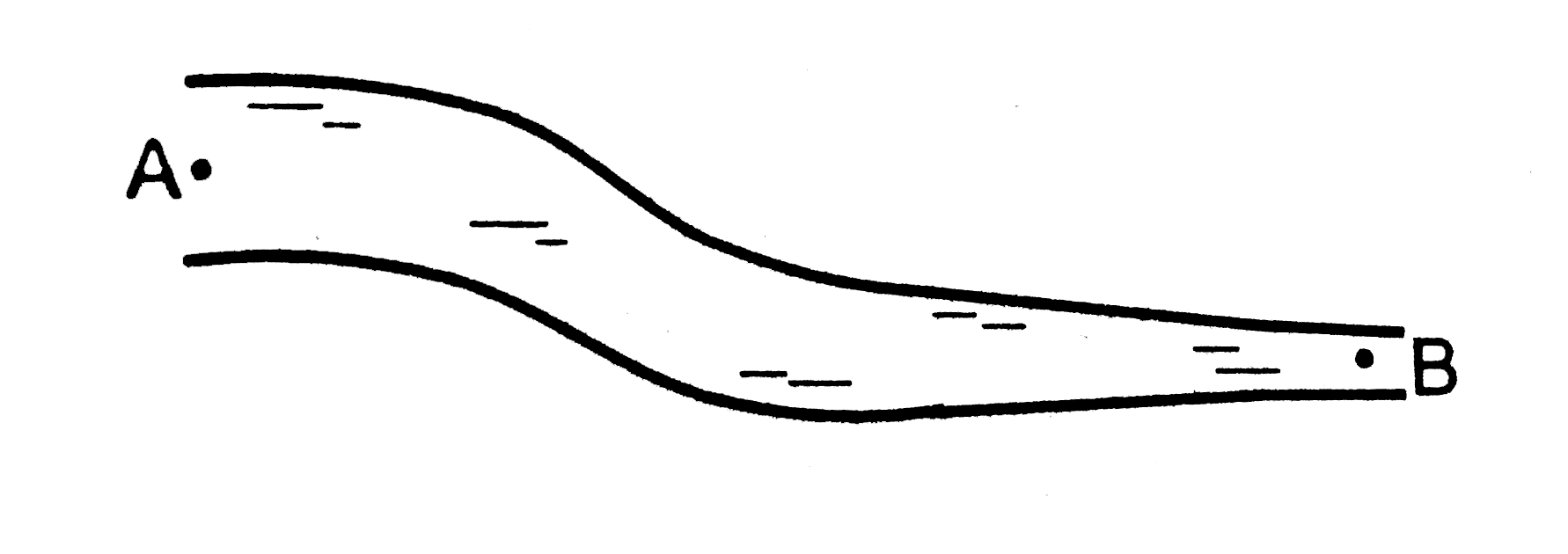Unsolved Numerical Problems from GK PUBLICATIONS PHYSICS Chapter 1 FLUID MECHANICS for Class 11
| Class 11 | PHYSICS |
| Chapter | FLUID MECHANICS |
| GK PUBLICATIONS PHYSICS | Unsolved Numerical Problems |
| Medium | English |
| Academic Year | 2023-2024 |
Question 3
A horizontal pipeline carries water in a streamline flow. At a point along the pipe, where the cross- sectional area is 10cm2, the water velocity is 1ms−1 and the pressure is 2000 Pa. The pressure of water at another point where the cross-sectional area is 5cm2, is........Pa. (Density of water =103kg.m−3)View SolutionQuestion 6
Water from a tap emerges vertically downwards with an initial spped of 1.0ms−1. The cross-sectional area of the tap is 10−4m2. Assume that the pressure is constant throughout the stream of water, and that the flow is steady. The cross-sectional area of the stream 0.15 m below the tap isView SolutionQuestion 7
A piece of metal floats on mercury. The coefficient of volume expansion of metal and mercury are γ1andγ2, respectively. if the temperature of both mercury and metal are increased by an amount ΔT, by what factor does the fraction of the volume of the metal submerged in mercury changes ? View SolutionQuestion 8
A large open tank has two holes in the wall. One is a square hole of side L at a depth y from the top and the other is a circular hole of radius R at a depth 4y from the top. When the tank is completely filled with water, the quantities of water flowing out per second from both holes are the same. Then, R is equal to View SolutionQuestion 14
A cylindrical tank 1m in radius rests on a platform 5m high. Initially the tank is filled with water to a height of 5m. A plug whose area is 10−4m2, is removed from an orifice on the side of the tank at the bottom. Calculate the following :
(a) Initial speed with which the water flows from the orifice.
(b) Initial speed with which the water strikes the ground,
( c) Time taken to empty the tank to half its original value.View SolutionQuestion 19
Shows a hydraulic press with the larger piston of diameter 35cm at a height of 1.5m relative to the smaller piston of diameter 10cm. The mass on the smaller piston is 20gk. What is the force exerted on the load by the lerger piston ? The density of oil in the press is 750kgm−3.View SolutionQuestion 20
Two identical cyclindrical vessels (area of cross section 3.5×10−3m2) with their bases at the same level contain liquid of density 800kg/m3. The height of liquid in one vessel is 0.3 m and in the other it is 0.1m. Assuming g=10m/s2, find the workdone by gravity in equalising levels when the vessels are interconnected at bottom.View SolutionQuestion 22
A vertical U-tube of uniform inner cross-section contains mercury in both of its arms. A glycerine (density1.3gcm−3) column of length 10cmis introduced into one of the arms Oil of density 0.8gcm−3 is poured in the other arm until the upper surface of the oil and glycerine are in the same horizontal level. Find the length of the oil column.View SolutionQuestion 24
A person can change the volume of his body by taking air into his lungs. The amount of change can be determined by weighing the person under water. Suppose that under water a person weighs 20.0 N with partially full lungs and 40.0 N with empty lungs. Find the change in body volume.View SolutionQuestion 27
A J-tube, shown in figure, contains a volume V of dry air trapped in arm A of the tube. The atmoshpere pressure is H cm of mercury. When more mercury is poured in arm B, the volume of the enclosed air and its pressure changes. What should be the difference in mercury levels in the two arms so as to reduce the volume of air 1/2.
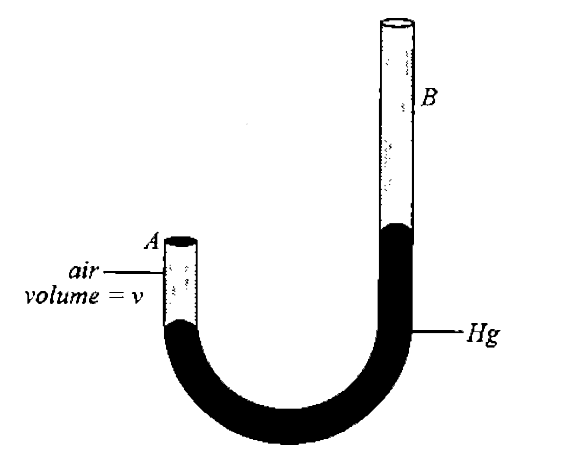 View Solution
View SolutionQuestion 29
A solid ball of density half that of water falls freely under gravity from a height of 19.6 m and then enters water. Upto what depth will the ball go? How much time will take to come again to the water surface? Neglect air resistance and viscosity effects in water (g=9.8m/s2)View SolutionQuestion 35
A tank is filled with water to a height H. A hole is punched in the wall at a depth h below the water surface. Find the distance x from the wall at which the stream strikes the floor. Could a hole be punched at another depth so that this second stream would have the same range? If so at what depth? For what value of h is range maximum?View SolutionQuestion 40
_S01_025_Q01.png)
A cubical block of wood of edge 3 cm floats in water. The lower surface of the cube just touches the free end of a vertical spring fixed at the bottom of the pot. Find the maximum weight that can be put on the block without wetting it. Density of wood =800kg/m3 and spring constant of the spring =50N/m. Take g=10m/s2View SolutionQuestion 42
A container of large uniform cross-sectional area A resting on a horizontal surface, holds two-immiscible, non-viscous & incompressible liquids of densities d & 2d, each of height H/2. The lower density liquid is open to the atmoshpere having pressure P0. A homogeneous solid cylinder of length L(L<H/2) corss-sectional area A/5 is immersed such that it floats with its axis vertical at the liquid interface with the length L/4 in the denser liquid. Determine : (i) The density D of the solid & (ii) The total pressure at the bottom of the container.View SolutionQuestion 45
A level controller is shown in the figure it contains of a thin circular plug of diameter 10 cm and a cyclindrical plug of diameter 20 cm tied together with a light rigid rod of length 10 cm. The plug fits in smoothly in a dram hole at the bottom of the tank which opens into atmosphere. As water fills up and the level reaches height h, the plug opens. Find h. Determine the level of water in the tank when the plug closes again. The float has a mass 3kg and the plug may be assumed as massless.
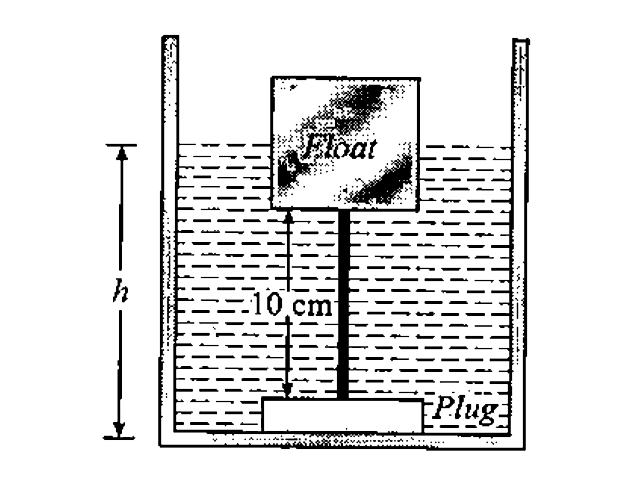 View Solution
View SolutionQuestion 46
Two communicating cylindrical tubes contain mercury. The diametr of one vessel is four times large than the diameter of the outer. A column of water of heigt 70cm is poured into the narrow vessel. How much wil the mercury level rise in the other vessel and how much will it sink in the narow one? How much will the mercury level rise in the narrow vessel, if a column of water of the same height is pured into the broad vessel?
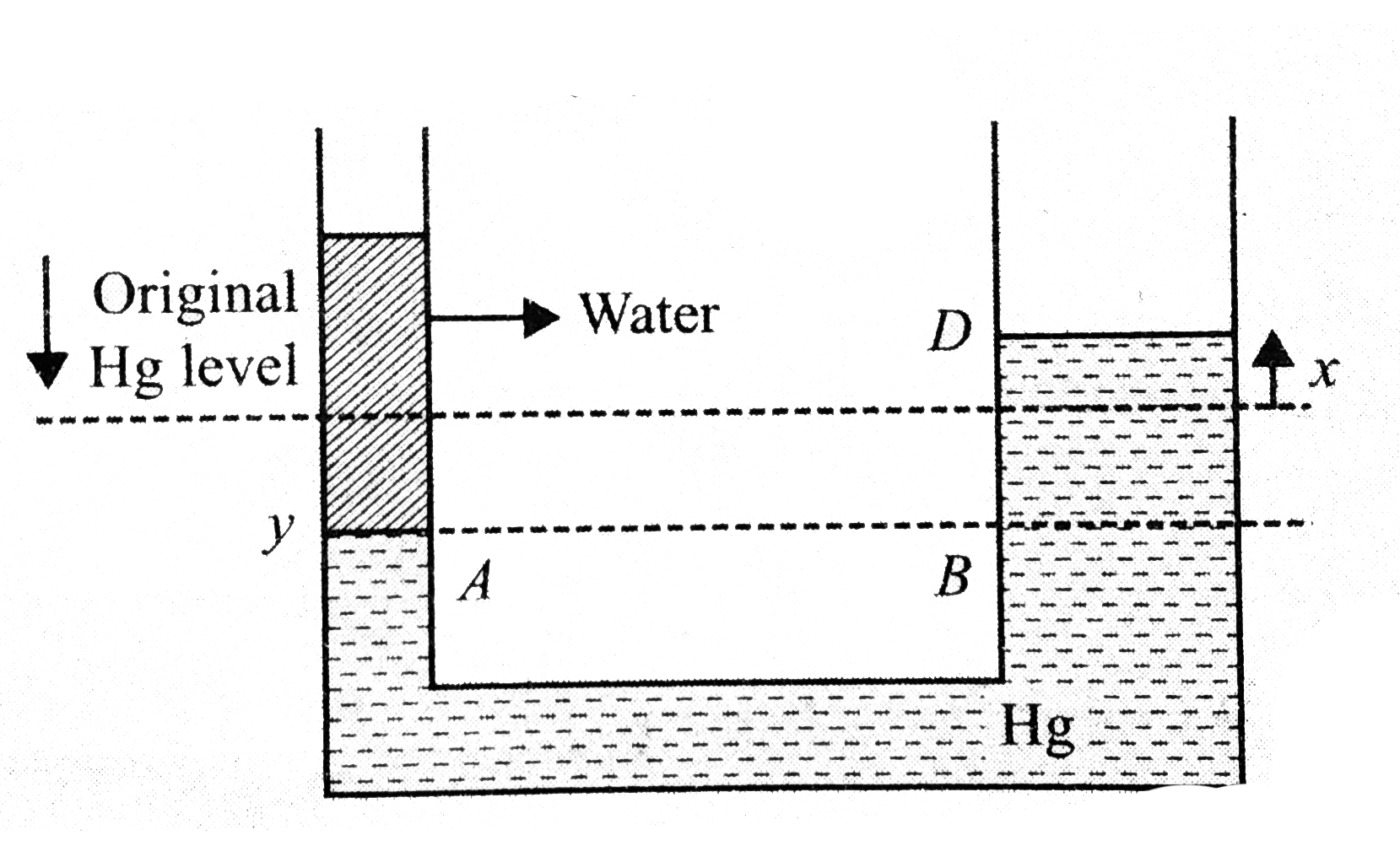 View Solution
View SolutionQuestion 47
The U-tube acts as a water siphon. The bend in the tube is 1m above the water surface. The tube outlet is 7m below the water surface. The water issues from the bottom of the siphon as a free jet at atmospheric pressure. Determine the speed of the free jet and the minimum absolute pressure of the water in the bend. Given atmospheric pressure =1.01×105N/m2,g=9.8m/s2 and density of water =103kg/m3
 .View Solution
.View SolutionQuestion 48
The interface of two liauids of densities ρ and 2ρ respectively lies at the point A in a U tube at rest. The height of liquid columb above A is 8a/3 where AB = a. The cross-sectional area of the tube is S. With what angular velocity the tube must be whirled about a vertical axis at a distance 'a' such that the interface of the liquids shifts towards B by 2a/3.
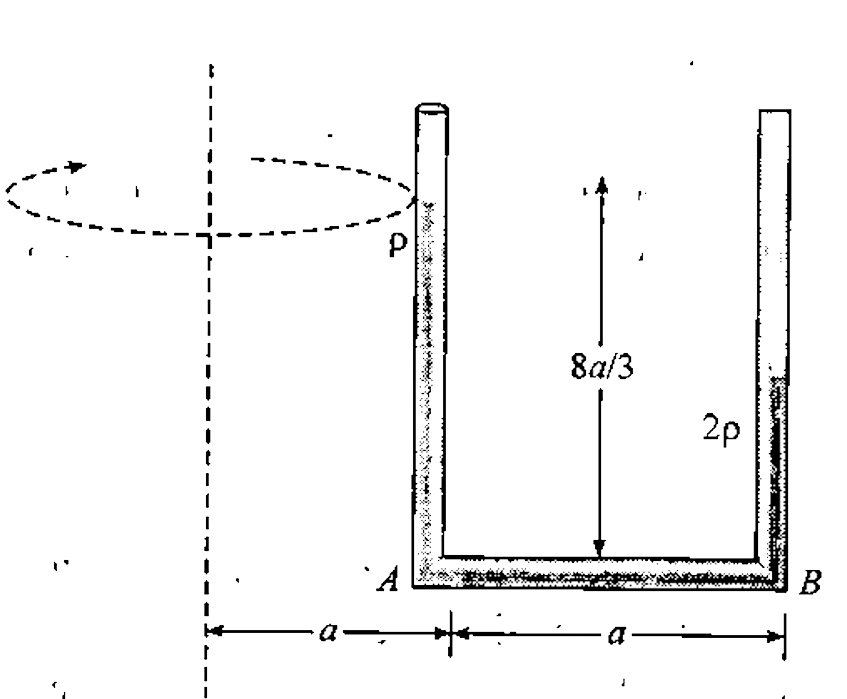 View Solution
View SolutionQuestion 49
A wooden stick of length L, radius R and density ρ has a small metal piece of mass m ( of negligible volume) attached to its one end. Find the minimum value for the mass m (in terms of given parameters) that would make the stick float vertically in equilibrium in a liquid of density σ(>ρ).View SolutionQuestion 50
A container of large uniform cross sectional area A, resting on horizontal surface, holds two immiscible non viscous and incompressible liquids of density d and 2d, each of height H2 as shown in the figure. The lower density liquid is open to the atmosphere having pressure P0. A tiny hole of area (s(s<<A) is punched on the vertical side of the container at a height h(h<H2). Determine
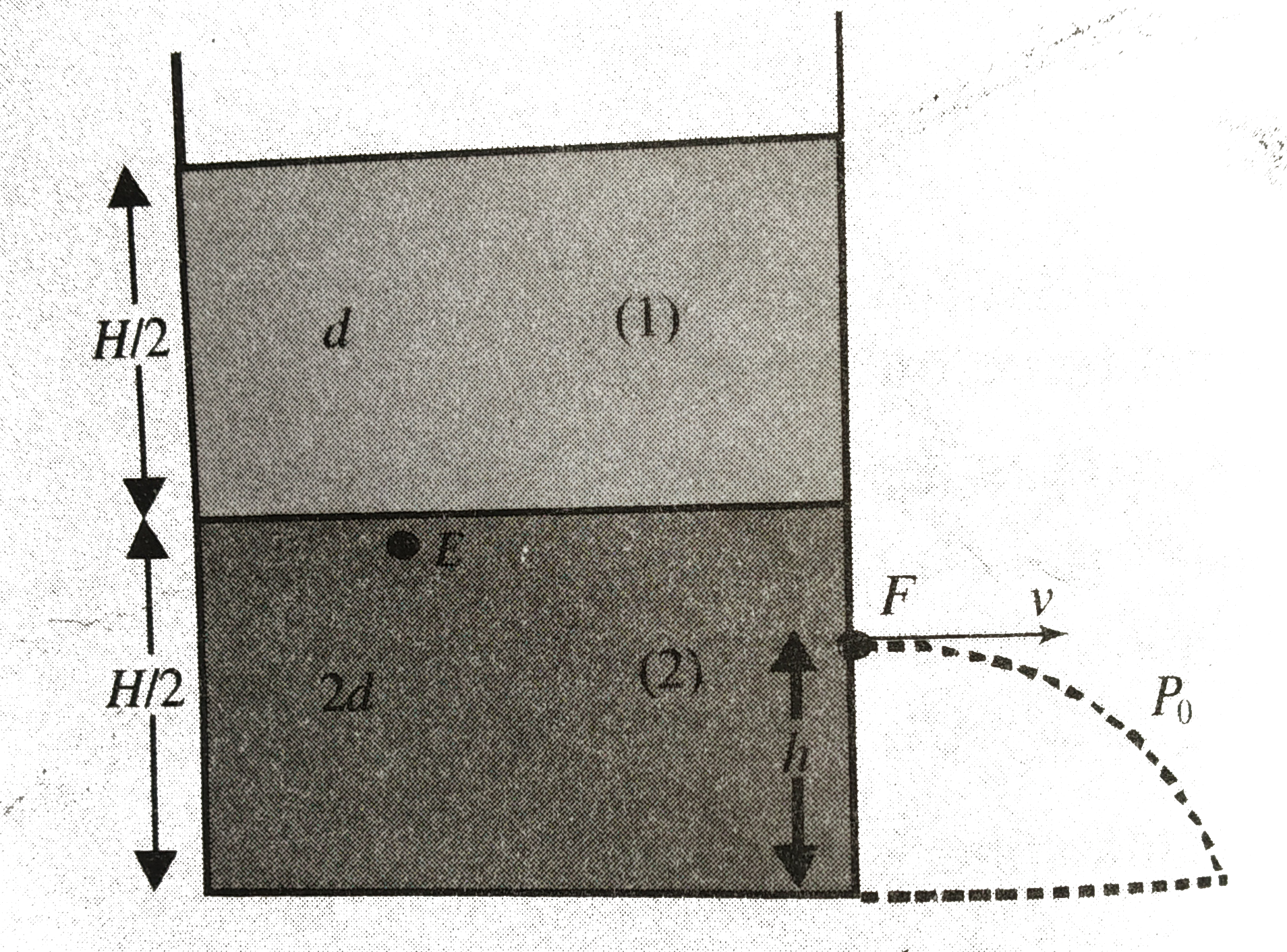
a.the initial speed of efflux of the liquid at the hole
b. the horizontal disance x travelled by the liquid initially
c. the height hm at which at the hole should be punched so that the liquid travels the maximum distance xm initially. also calculate xm (neglect air resistance in calculations).View SolutionQuestion 53
A wooden plank of length 1m and uniform cross-section is hinged at one end of the bottom of tank as shown in figure. The tank is filled with water upto a height of 0.5m. Find the angle θ that the plank makes with the vertical in the equilibrium position. [Exclude the case thea=0]
 View Solution
View SolutionQuestion 54
The cross-sectional area of the U-tube shown in the figure is everywhere uniform and of value 1.25×10−3m2. The horizontal section of the tube is of length 20 cm. When at rest, the limbs of the tube contain a liquid of density 2.5 up to equal heights. If the tube is rotated with angular velocity of 8.4rad/s about one limb, calculate the volume of liquid that flows from one limb to the other.
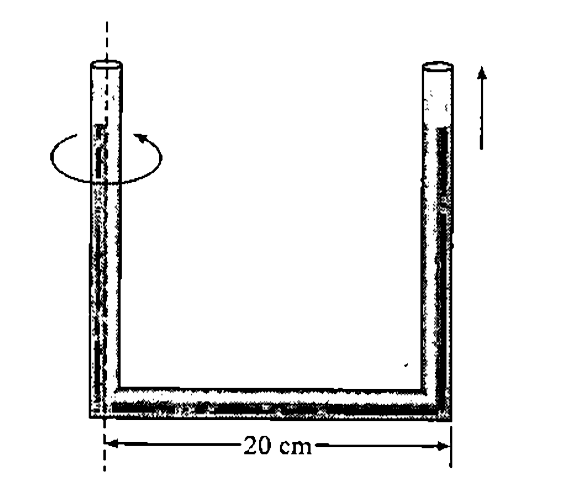 View Solution
View SolutionQuestion 57
A cylindrical tank having cross-sectional area A=0.5m2 is filled with two liquids of density ρ1=900kgm−3 and ρ2=600kgm−3, to a height h=60cm each as shown in the figure. A small hole having area a=5cm2 is made in right vertical wall at a height y=20cm from the bottom. A horizontal force F is applied on the tank to keep it in static equilibrium. The tank is lying on a horizontal surface. Neglect mass of the cylindrical tank in comparison to mass of the liquids (akeg = 10 ms^(-2)).
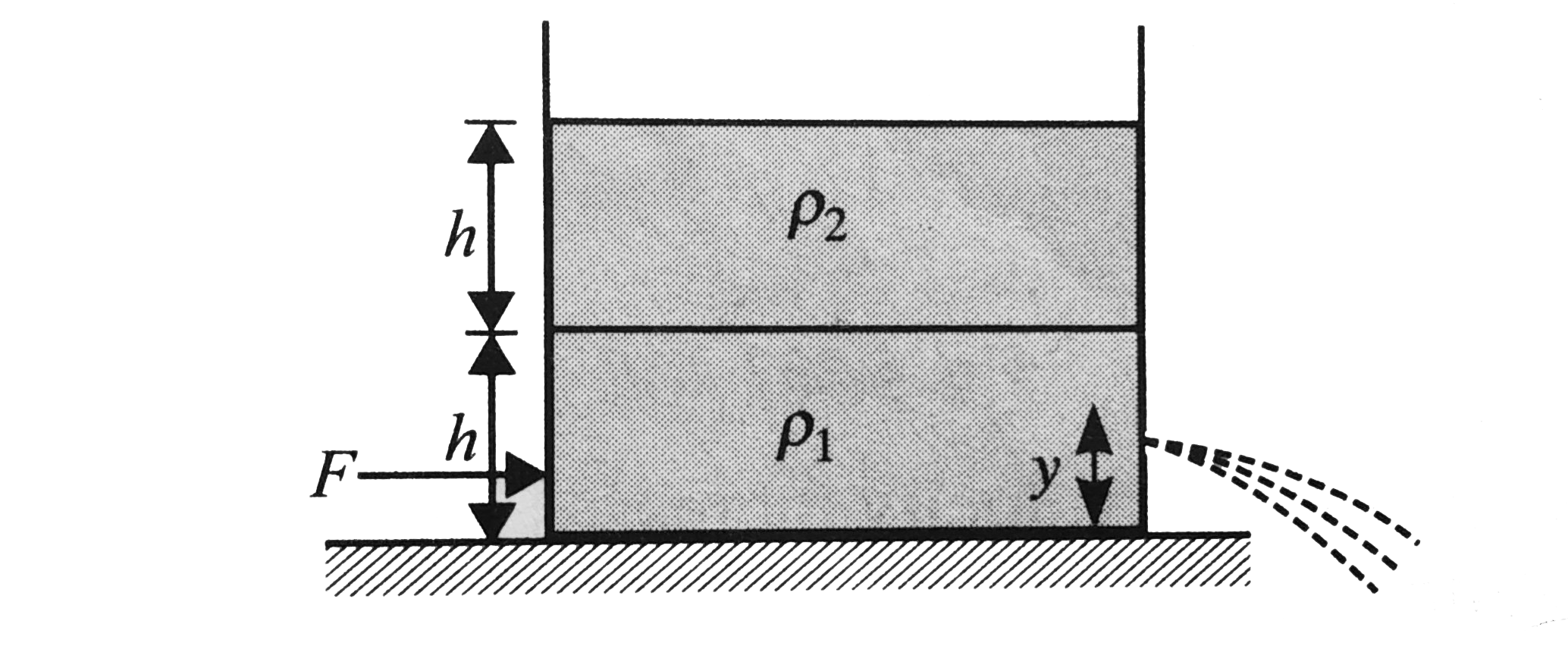
The horizontal force required to keep the cylinder in static equilibrium, on a smooth horizontal plane is View SolutionQuestion 58
A conical vessel wihout a bottom stands on a table. A liquid is poured with the vessel & as soon as the level reaches h, the pressure of the liquid raises the vessel. The radius of the base of the vessel is R and half angle of the cone α and the weight of the vessel is W. What is the density of the liquid ?
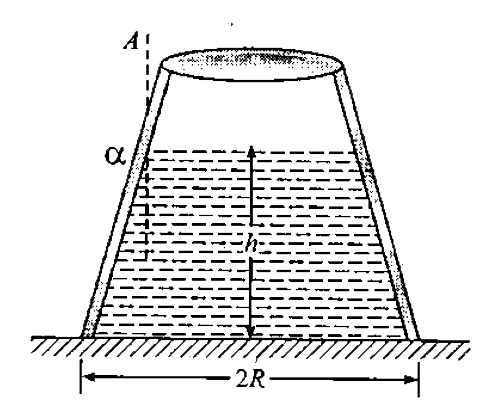 View Solution
View SolutionQuestion 63
A water clock used in ancient Greek is designed as a closed vessel with a small orifice O. The time is determined accrding to the level of the water in the vessel. What should be the shape of the vessel be for the time scale to be uniform. Find mathemtical equation governing curve AOB.
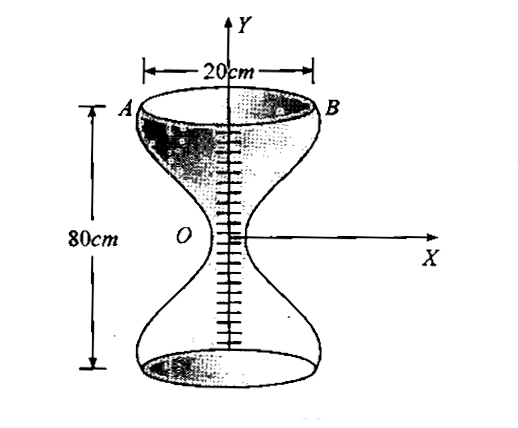 View Solution
View SolutionQuestion 65
Two identical container are open at the top and are connected at the bottom via a tube of negligible volume and a valve which is closed. Bith containers are filled initially to the same height 1.00m, one with water the other with mercury, as the drawing indicates. The valve is then opened. Water and mercury are immiscible. Determine the fluid level in the left container when equilibrium is re-established.
 View Solution
View SolutionQuestion 66
A thin rod of length (L) and area of cross - section (S) is pivoted at its lowest point (P) inside a stationary, homegeneous and non - viscous liquid. The rod is free to ratate in a vertical plane about a horizontal axis passing through (P). The density (d_1) of the material of the rod is smaller than the density (d_2) of the liquid. The rod is displaced by a small angle (theta) from its equilibrium position and then released. Show that the motion of the rod is simple harmonic and determine its angular frequency in terms of the given parameters.
 .View Solution
.View SolutionQuestion 67
Consider a horizontally oriented syringe containing water locate at a height of 1.25m above the ground. The diameter of the plunger is 8mm and the diameter of the nozzle is 2mm. The plunger is pushed with a constant speed of 0.25m/s. Find the horizontal range of water stream on the grond. Take g=10m/s2
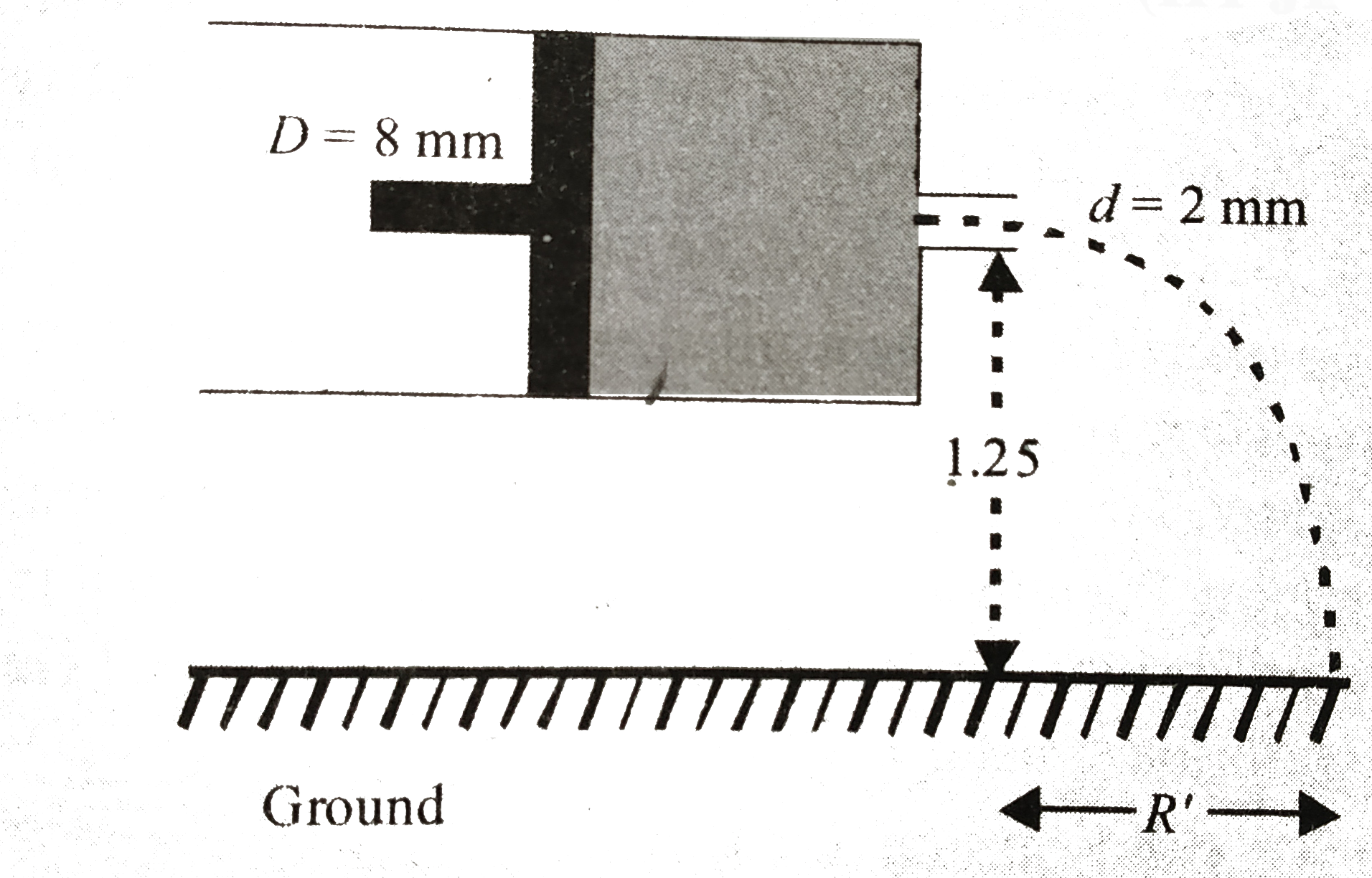 View Solution
View SolutionQuestion 68
A water pipe with interna diameter of 2m carries water at the floor of a house with velocity 2 m/s and at pressure 2×105N/m2. Another pipe of internal diameter 1 cm is connected to it and takes water to 1 st floor, 5m above ground. What is the velocity and water pressure at 1st floor ? (Take g=10m/s2).View SolutionQuestion 72
A cylindrical vessel is filled with water upto a height of 1m. The cross-sectional area of the orifice at the bottom is (1/400) that of the vessel.
(a) What is the tiome required to empty the tank through the orifice at the bottom?
(b) What is the time required for the same amount of water to flow out if the water level in tank is maintained always at a height of 1m from orifice?View SolutionQuestion 73
An open reactangular tank with tank with dimensions 5×4m×3m contains water upto a height of 2m is accelerated horizontally along the longer life.
(a) Determine the maximum acceleration that can be given without spilling the water.
(b) If this acceleration is inscreased by 20%. Calculate the percentage of water spilt over.
(c) If initially,the tank is closed at the top and is accelerated horizontally by 9m/s2,find the gauge pressure at the bottom of the front and rear walls of the tank. (g=10m/s2)
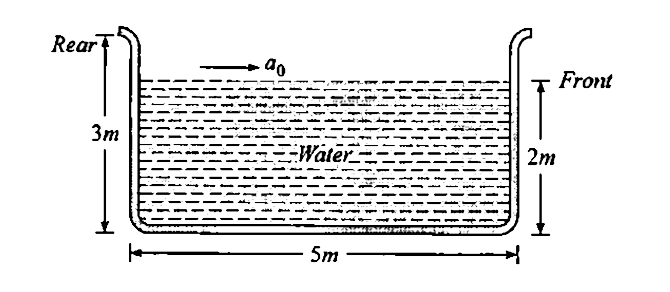 View Solution
View SolutionQuestion 74
Two holes, each of area A=0.2cm2 are drilled in the wall of a vessel filled with water. The distances of the holes from the level of water are h and h+H. Find the point where the streams flowing out of the holes intersect. The level of water is maintained in the vessel by regulated supply.
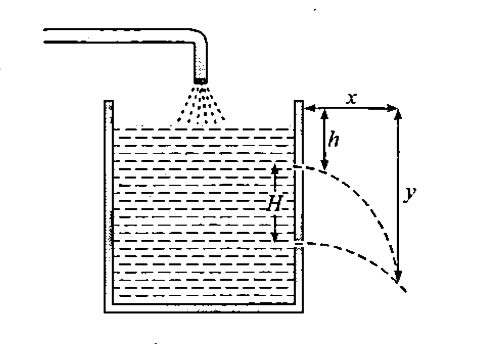 View Solution
View SolutionQuestion 75
A vertical tube has diameter 0.016 m at its bottom end from which water flows out at the rate of 1.2 kg per minute. The pressure at the end is atmospheric pressure 0.7 m of mercury. If the diameter of the tube is 0.004 m at a height of 0.3 m from the bottom end, fidn the pressure there.View SolutionQuestion 77
A large open top container of negligible mass and uniform cross sectional area A a has a small hole of cross sectional area A/100 in its side wall near the bottom. The container is kept on a smooth horizontal floor and contains a liquid of density ρ and mass M0. Assuming that the liquid starts flowing out horizontally through the hole at t=0, calculate a the acceleration of the container and b its velocity when 75% of the liquid has drained out. View SolutionQuestion 78
A cylindrical bucket, open at the top, is 0.200 m high and 0.100 m in diameter. A circular hole wih cross-section area 1.00cm2 is cut in the centre of the bottom of the bucket. Water flows into the bucket from a tube above it at the rate of 1.30×10−4m3/s. How high will the water in the bucket rise?View SolutionQuestion 79
A uniform cylindrical block of length l density d1 and area of cross section A floats in a liquid of density d2 contained in a vessel (d2>d1). The bottom of the cylinder just rests on a spring of contant k. The other end of the spring is fixed to the bottom of the vessel. A weight that may be placed on top of the cylinder such that the cylinder is just submerged in the liquid. find the weight.
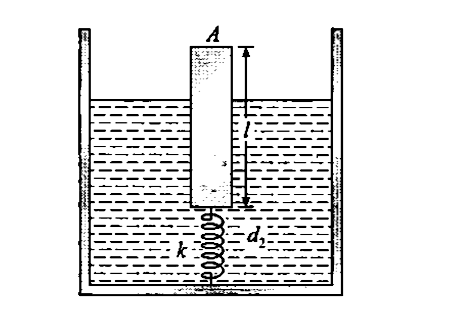 View Solution
View SolutionQuestion 80
A ball of density d is dropped on to a horizontal solid surface. It bounces elastically from the surface and returns to its original position in a time t1. Next, the ball is released and it falls through the same height before striking the surface of a liquid of density of dL
(a) If d<dL, obtain an expression (in terms of d, t1 and dL) for the time t2 the ball takes to come back to the position from which it was released.
(b) Is the motion of the ball simple harmonic?
(c) If d=dL, how does the speed of the ball depend on its depth inside the liquid? Neglect all frictional and other dissipative forces. Assume the depth of the liquid to be large.View SolutionQuestion 81
A side wall of a wide open tank is provided with a narrowing tube through which water flows out. The cross-sectional area of the tube decreases from S=3.0cm2 to s=1.0cm2. The water level in the tank is h=4.6m heigher than in the tube. Neglecting the viscosity of water, find the horizontal component of the force tending to pull the tube out of the tank.
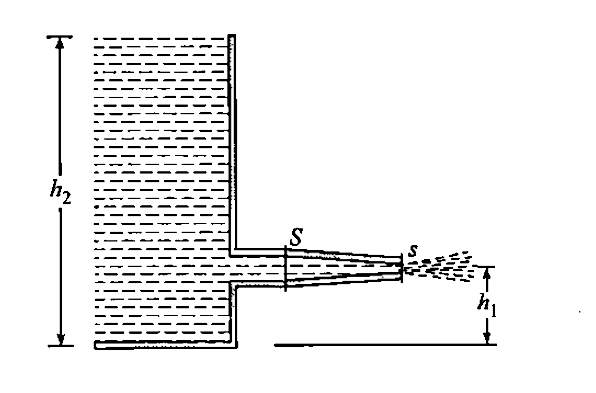 View Solution
View SolutionQuestion 83
Water leaks out from an open tank through a hole of area 2mm2 in the bottom. Suppose water is filled up to a height of 80 cm and the area of cross section of the tankis 0.4m2. The pressure at the open surface and the hole are equal to the atmospheric pressure. Neglect the small velocity of the water near the open surface in the tank. a. Find the initial speed of water coming out of the hole. b. Findteh speed of water coming out when half of water has leaked out. c. Find the volume of water leaked out during a time interval dt after the height remained is h. Thus find the decrease in height dh in term of h and dt.
d. From the result of part c. find the time required for half of the water to leak out.View SolutionQuestion 84
A steel ball floats in a vessel with mercury. How will be volume of the part of the ball submerged in mercury change if a layer of water completely covering the ball is poured above the mercury? If ρw,ρs and ρm are the densities of water, steel and mercury, find the ratio of these two volumes in terms in of ρw,ρs and ρm.View Solution

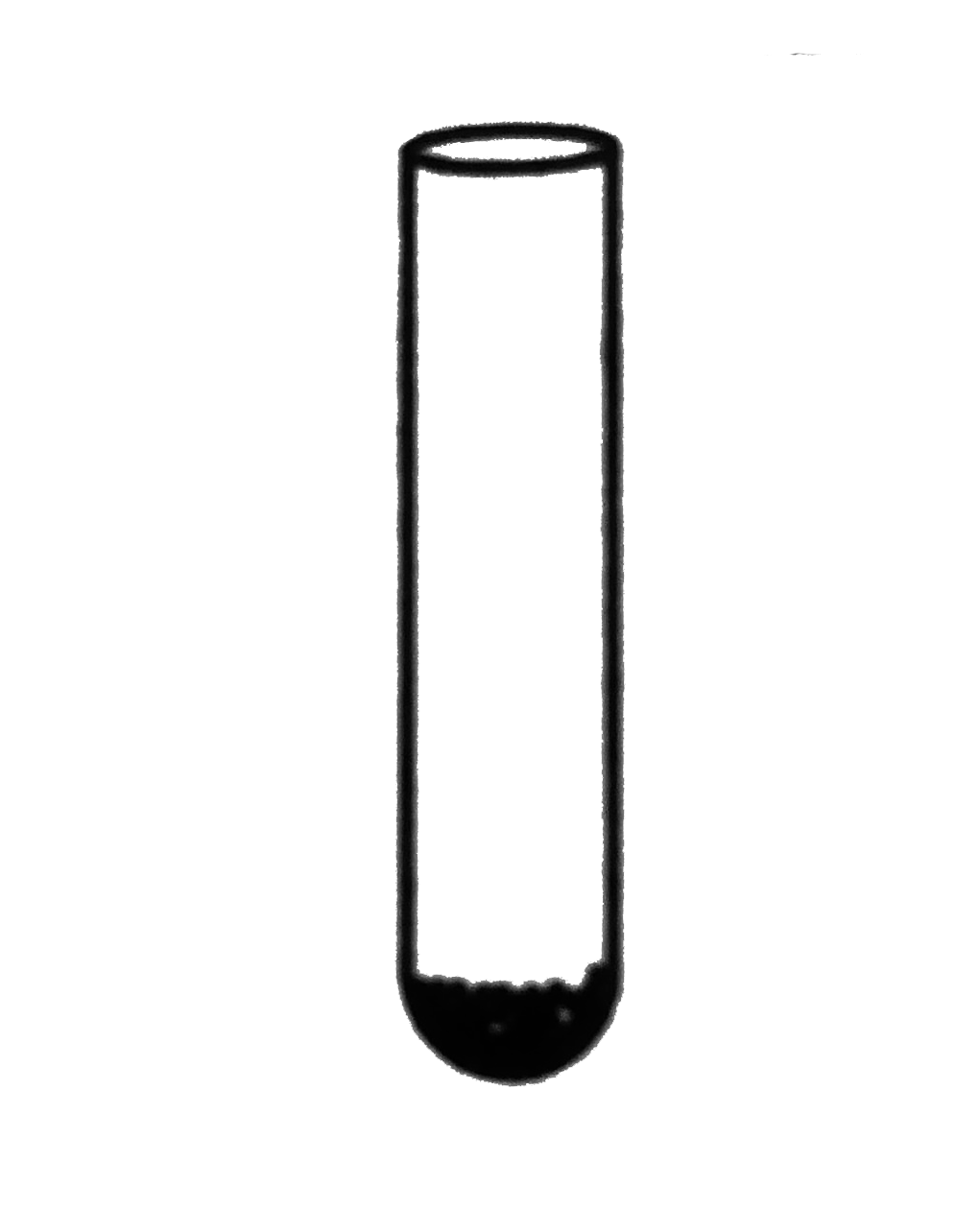

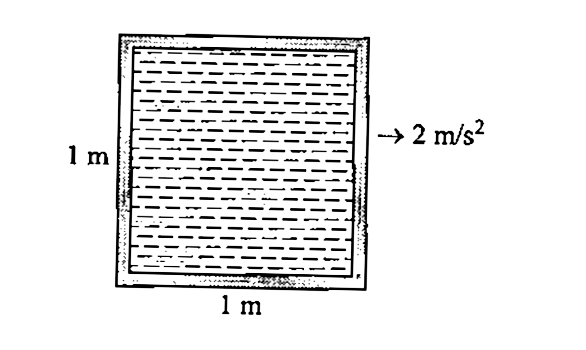
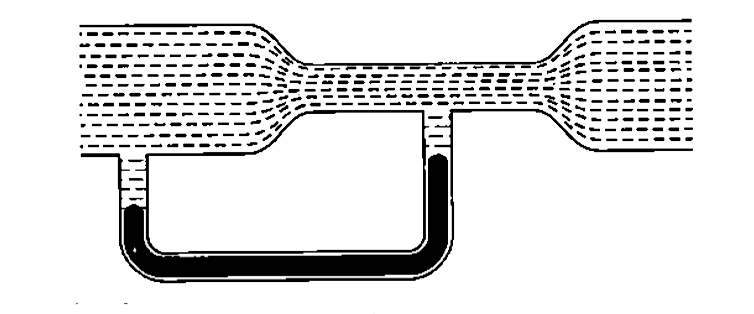
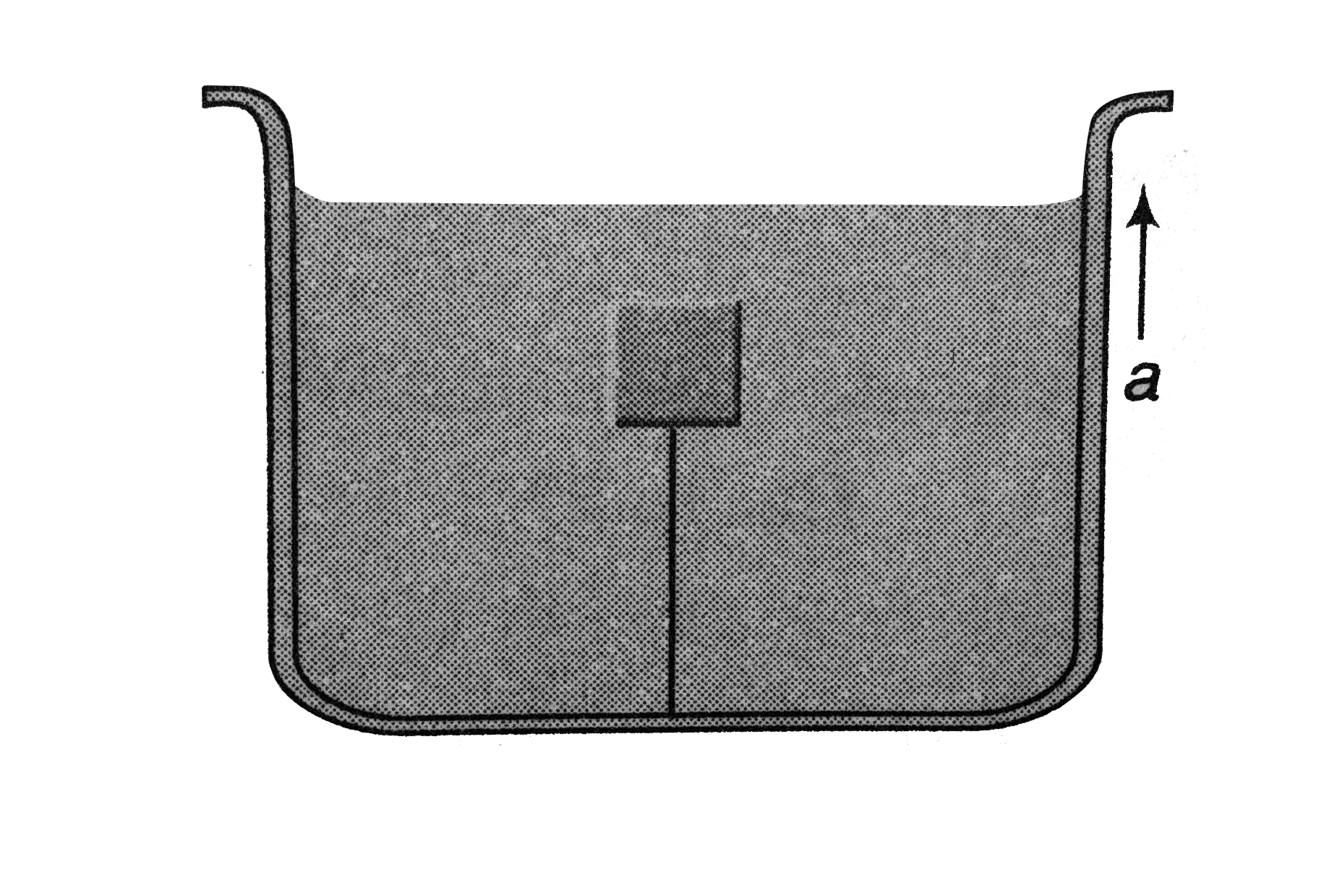 .
.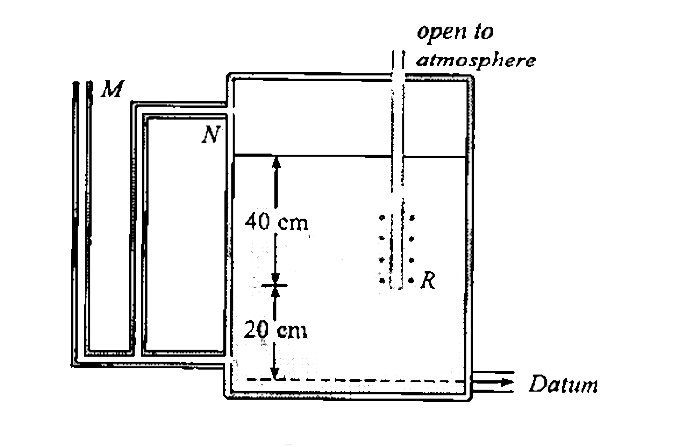

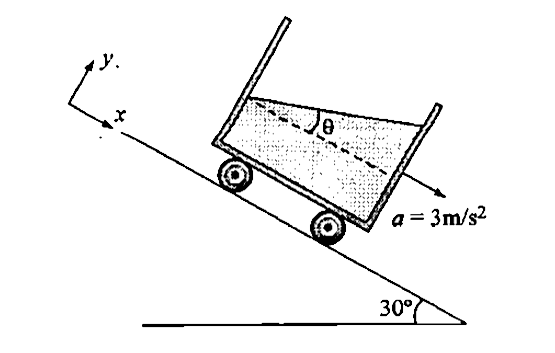
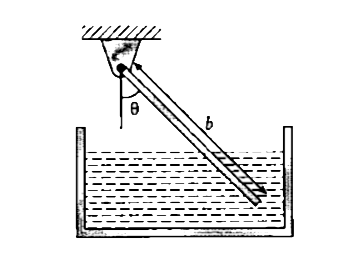
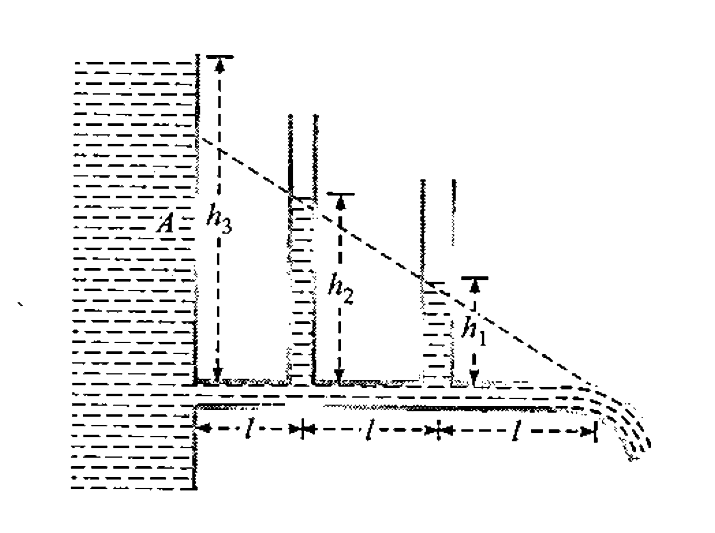
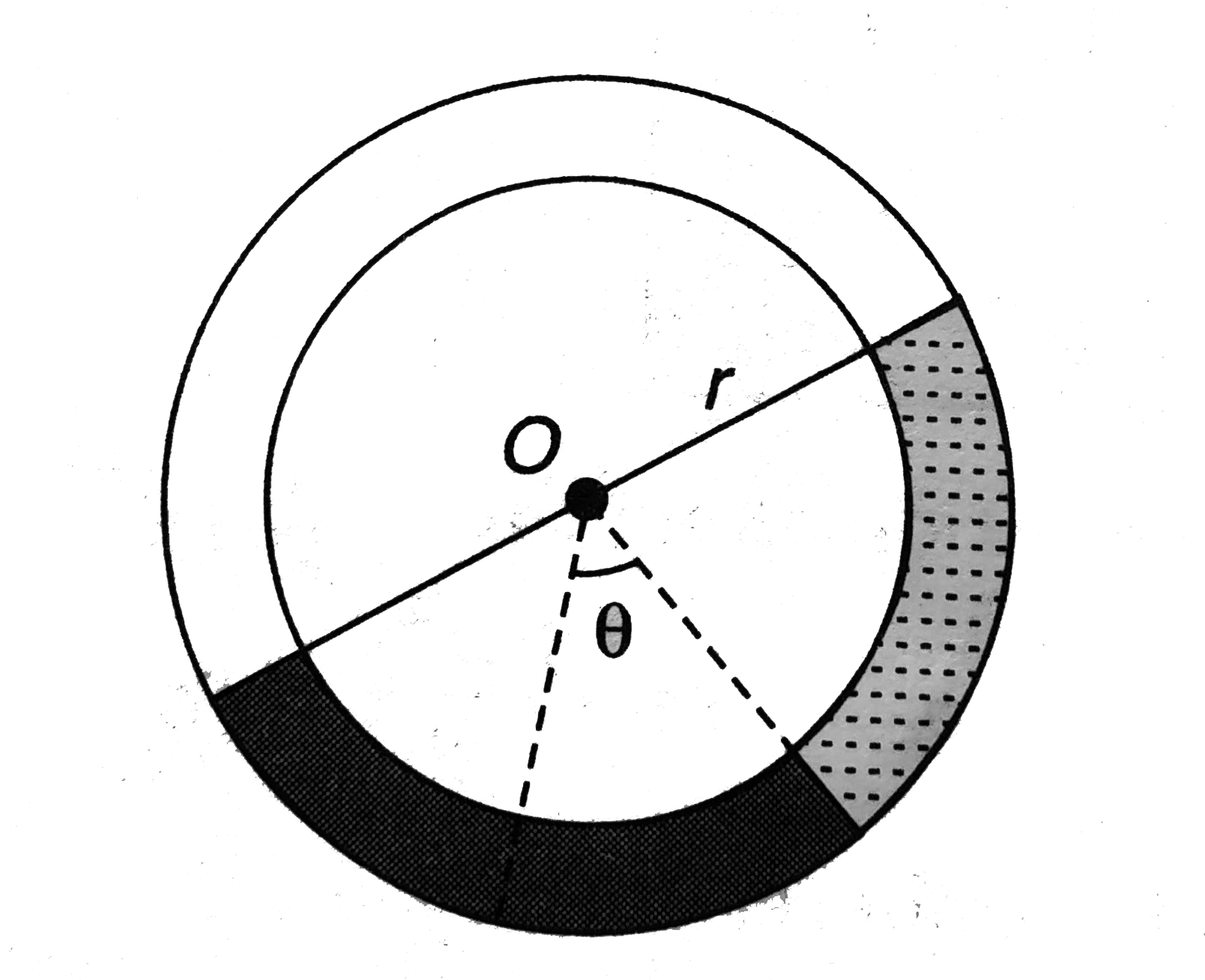
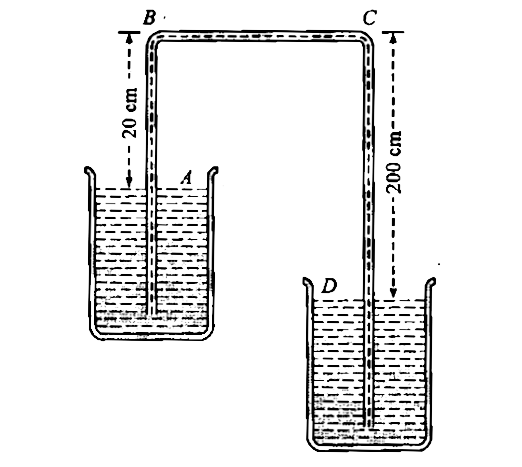
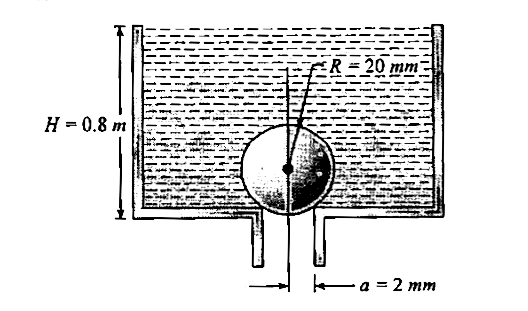
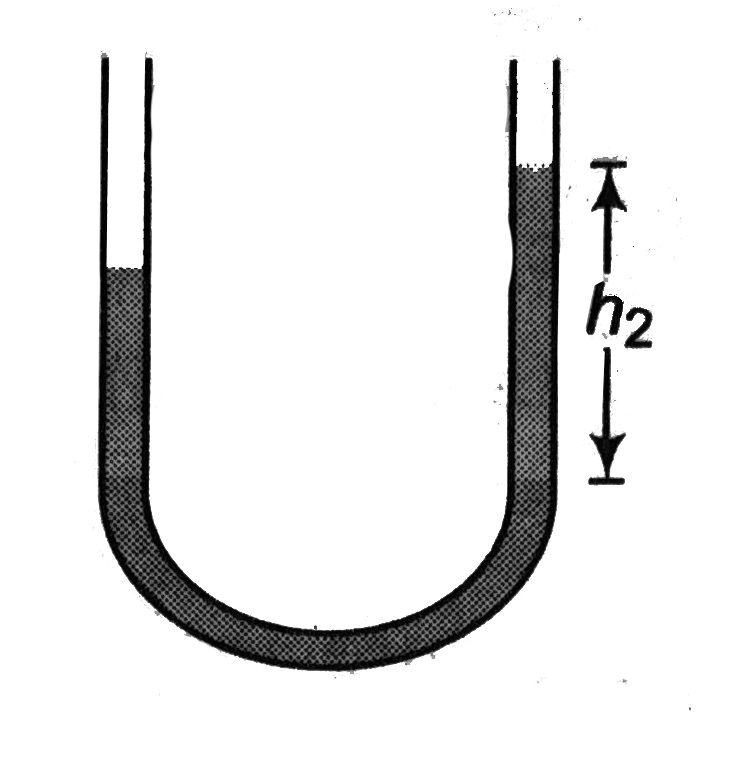 .
.